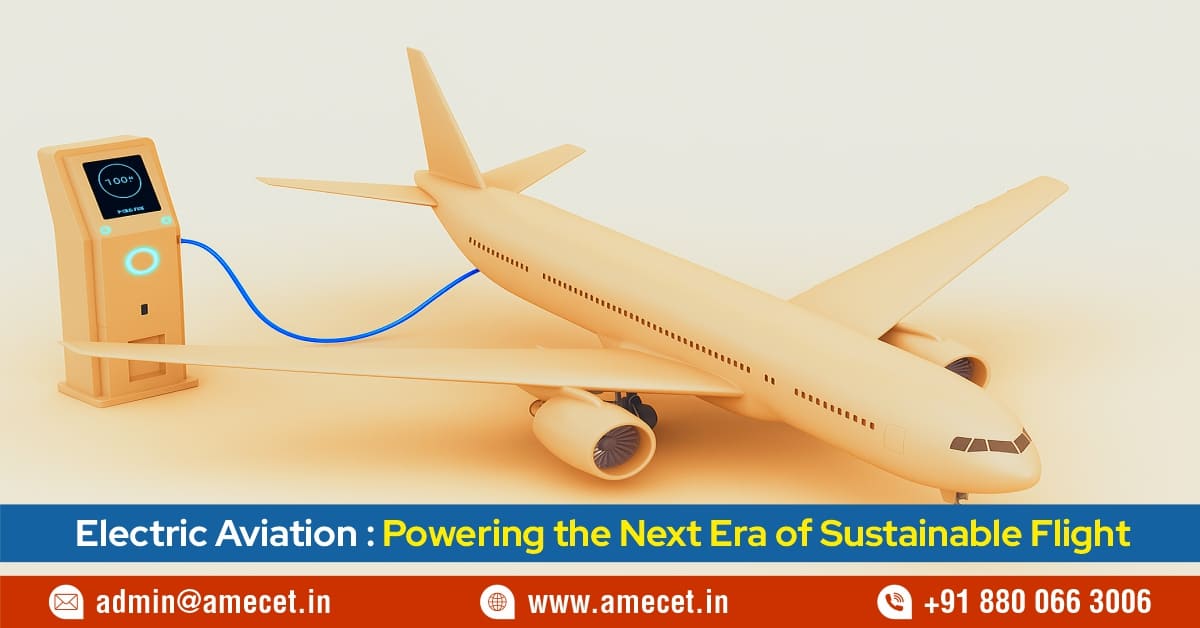Electric Aviation: Powering the Next Era of Sustainable Flight
Posted on : 26 August, 2025 3:21 pm
The aviation industry has always been at the forefront of innovation—bringing people closer, supporting global trade, and shaping modern travel. But with innovation comes responsibility. Today, aviation contributes about 2–3% of global carbon emissions, and with passenger numbers expected to double in the coming decades, sustainability has become the industry’s biggest challenge.
This is where electric aviation steps in, not as a distant dream but as a rapidly emerging solution that could redefine the future of air travel. Just as electric cars transformed road transport, electric aircraft are poised to do the same for the skies.
What Exactly is Electric Aviation?
In simple terms, electric aviation means using electric propulsion systems instead of traditional jet fuel engines. These aircraft run on batteries or hybrid-electric systems, drastically reducing emissions. They can be small two-seater planes, regional passenger jets, or even futuristic air taxis.
The key idea is clear: create a mode of flight that is cleaner, quieter, and more sustainable without compromising on efficiency.
Why Electric Aviation is a Game-Changer
-
Cleaner and Greener Travel – Electric aircraft produce little to no carbon emissions during flight, making them an eco-friendly alternative.
-
Lower Operating Costs – Electricity is cheaper than aviation fuel, and electric engines require less maintenance, which means airlines could eventually offer more affordable tickets.
-
Reduced Noise Pollution – Anyone living near airports knows how loud planes can be. Electric motors are significantly quieter, improving the quality of life in urban areas.
-
Sustainable Growth – With air travel demand rising globally, electric aviation ensures the industry can grow without placing unbearable stress on the environment.
Pros and Cons of Electric Aviation
| Pros (Advantages) | Cons (Challenges) |
|---|---|
| ✅ Zero or very low carbon emissions | ❌ Battery technology still has limited range |
| ✅ Lower operating and maintenance costs | ❌ Heavy batteries make scaling up difficult |
| ✅ Quieter operations, reducing noise pollution | ❌ Charging infrastructure at airports not yet developed |
| ✅ Potential for cheaper air tickets in the future | ❌ Safety and regulatory approvals take time |
| ✅ Supports global net-zero emission goals | ❌ Currently suited only for short-haul flights |
The Progress So Far
The shift toward electric aviation is no longer just theoretical. Major players and startups are already making progress:
-
Airbus is experimenting with hybrid-electric aircraft under its ZEROe initiative.
-
Boeing has supported electric aviation startups to explore regional aircraft.
-
NASA’s X-57 Maxwell, a fully electric experimental plane, is testing new designs for efficiency.
-
Eviation’s Alice, an all-electric commuter aircraft, has successfully completed test flights and is preparing for commercial use.
These milestones prove that the aviation world is not waiting for the future—it is actively building it.
Looking Ahead: The Future of Flight
Despite challenges, experts believe short-haul electric flights (up to 500 km) will become common within the next decade. Regional flights, cargo services, and even urban air taxis are expected to lead the way.
By 2050, many airlines aim for net-zero emissions, and electric aviation will be a vital piece of that puzzle. With advancements in battery technology and renewable energy, long-haul electric flights may eventually become a reality too.
Why This Matters for the Next Generation
For students and young professionals, electric aviation is not just about sustainability—it’s about opportunity. The industry will need skilled managers, engineers, operations experts, and innovators who can drive this transformation. Being part of this shift could mean working on one of the most exciting revolutions in aviation history.
Conclusion
Electric aviation is not just a buzzword—it’s a revolution already taking flight. It offers cleaner skies, quieter airports, lower costs, and a future where air travel is both accessible and sustainable. While challenges remain, the direction is clear: the aviation industry is preparing for a greener tomorrow.
For anyone passionate about aviation, this is the moment to pay attention. Electric aviation is more than just powering planes—it’s about powering the next era of flight itself.

